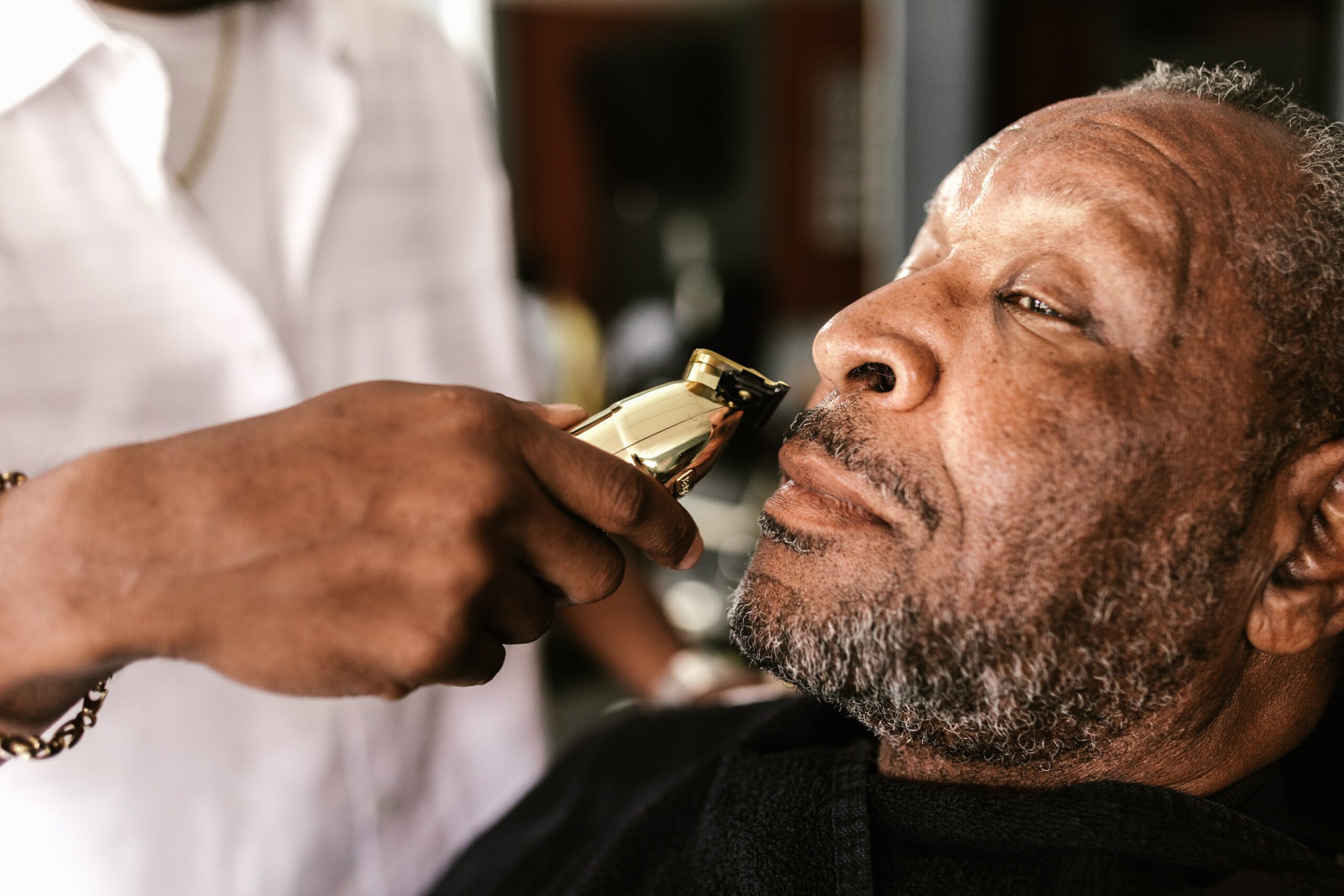4.6 Shaving the Client
Shaving facial hair may help a client feel good about themselves and helps them to maintain their appearance in the way it was prior to becoming unable to provide their own care. It also helps the client to appear familiar and well-cared to their family and friends, which can be comforting during periods of illness. What is not often highlighted is that some women may also need shaving. As women age, excess hair may appear on their upper lip and chin, and they or their family may wish to have these areas shaved.
Remember to always allow the person to do the shaving if they are able to. The HCA can help by preparing the items they will use for shaving. You can also hold up the hand mirror or provide extra light so they can see better. However, before shaving a client, HCAs should obtain their consent. Inquire about their preferences as they will have a certain way based on years of shaving routine (starting on the neck vs. starting with the sideburns), and ask what types of products they like. Always wear gloves during shaving due to the risk of bleeding. While consideration is given for the type of razor a client prefers, electric razors are most often used in care facilities due to the risk of injury from manual razors and the fact that some clients are on medication or have conditions that put them at a higher risk of bleeding. So it is always important to check the care plan to ensure that the client can be shaved with a razor that has a blade. Shaving cream should always be used with safety razor blades. Shaving cream is not to be used when using an electric razor. Never share or use someone else’s razor on a client, as blood-borne diseases can be spread this way due to the possibility of blood on the client’s razor.
| STEP | ACTION | REASON |
|---|---|---|
| 1. | Explain the procedure to the client. | |
| 2. | Wash and dry your hands. Always wear gloves when shaving. | |
| 3. | Assemble equipment, for example:
|
|
| 4. |
|
|
| 5. | Place a towel under client’s chin, covering their shoulders and the front of their chest. | |
| 6. | If the client is able to shave independently, place all equipment and supplies within reach and help as needed. Ensure safety razor blades are sharp. | A dull blade can irritate the skin and increase the risk of cuts and bleeding. |
| 7. |
|
This helps avoid cuts and makes for a smoother shave. |
| 8. | Rub shaving cream into client’s beard and mustache if using a razor. |
 The shaving cream helps soften the skin and hair, and provides a smoother shave. |
| 9. |
|
|
| 10. |
|
 |
| 11. |
|
|
| 12. |
|
|
| 13. | If the client has cuts from shaving, blot the area with a gauze pad until it stops bleeding. | |
| 14. | Apply moisturizer and/or aftershave, per the client’s request and preferences. Avoid applying lotion or aftershave to irritated or cut skin. | |
| 15. | Ensure the bed is at its lowest height, and side rails are up. | Ensure safety. |
| 16. |
|
|
| 17. | Document and report any cuts the client received during shaving and/or any skin conditions observed, such as red, irritated skin, broken skin, or pimples, boils, or cuts. |
Shaving Underarms and Legs
To assist with shaving underarms and legs, follow the same procedures and guidelines as above. Shave leg hair from ankle to knee, using short, smooth strokes upward. Some clients also like to shave their knee to thigh area. Ask the client what their preference is. Apply shaving cream to legs or underarms prior to shaving. Ensure the razor used is sharp, not dull. Shave underarm hair in short, smooth strokes. Underarm hair can grow in all directions. Always shave in the direction of hair growth.
Watch the video:
Helping Someone Shave, presented by the St. Elizabeth Foundation on YouTube CareChannel (2019). This video demonstrates the techniques for Personal Hygiene Care when you help someone shave.

